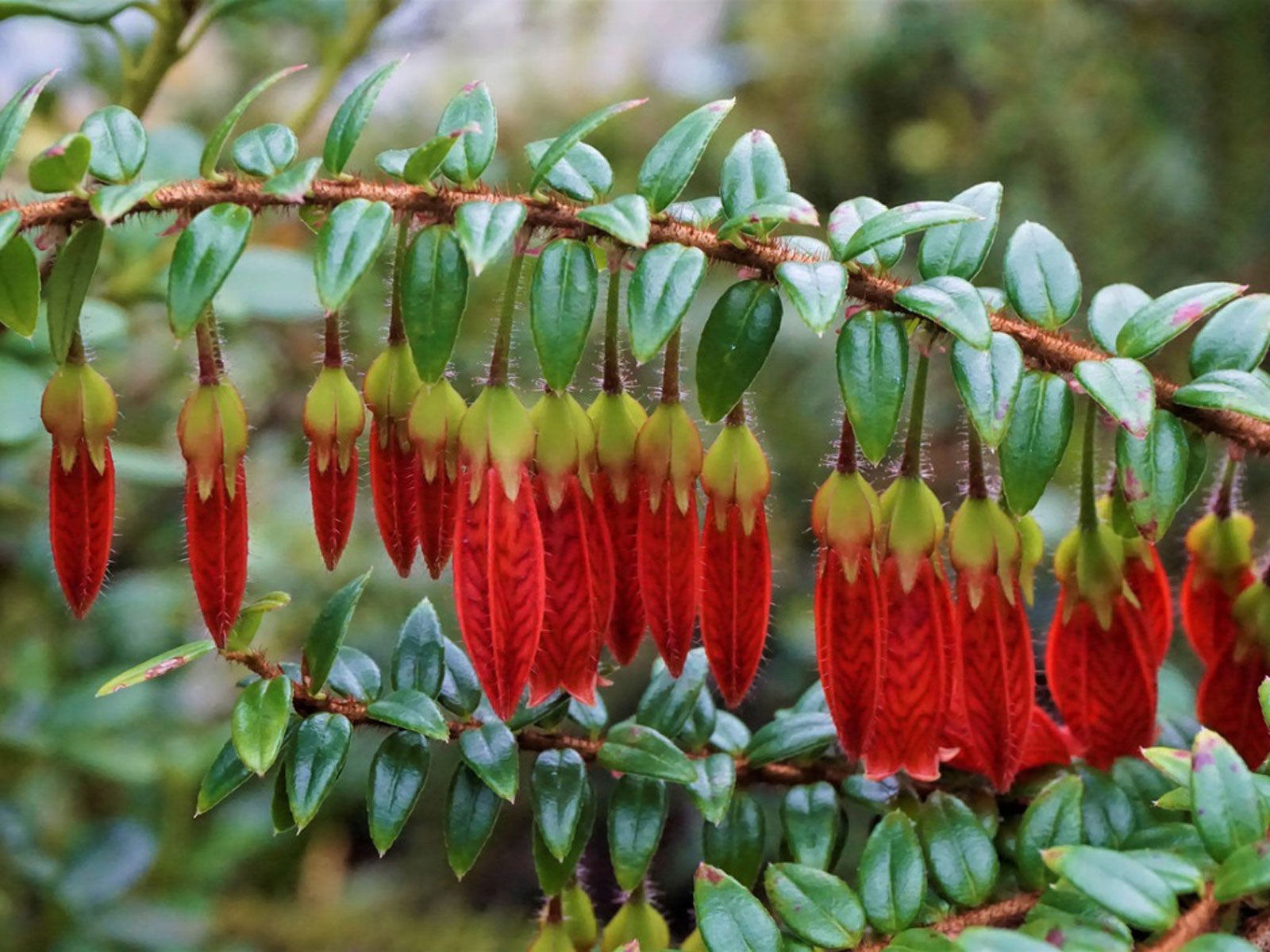What Is A Himalayan Lantern – Tips On Himalayan Lantern Plant Care

If you live in a temperate region and want to try growing a more exotic hanging plant, give the Himalayan lantern plant a try. What is a Himalayan lantern? This unique plant has gorgeous red to pink blossoms that give way to lovely lavender to purple berries reminiscent of its relative the blueberry. Read on to learn how to grow this plant.
What is a Himalayan Lantern Plant?
Himalayan lantern plant (Agapetes serpens) is a member of the Ericaceae family. It is native to the cool Himalayas and grows as an evergreen shrub. It is drought tolerant once established and can tolerate low temps for a short period, down to 22 degrees F. (-6 C.).
The plant produces a large woody tuber at the base. Long arching branches of 3 to 5 feet (1-1.5 m.) in length spring from its caudex-like base. These delicate branches are lined with thin green to red tinged leaves augmented by red tubular blooms further decorated with lighter red chevrons. These bright red flowers give the plant its name, as they resemble Chinese lanterns.
How to Grow Himalayan Lantern Plants
Himalayan lanterns are hardy to USDA zone 7. They endure temperatures in the Himalayan foothills from 32 to 80 degrees F. (0-27 C.).
The plant does well in both sun and shade, although it tolerates more sun in coastal areas with cooler temperatures.
The weeping habit lends itself well to hanging baskets. It can also be grown as an epiphyte without any soil at all. Grow plants in moist, well-draining soil that is slightly acidic.
Care for Himalayan Lanterns
Protect your lantern plants from hot afternoon sun by hanging it indoors or under some trees.
Sign up for the Gardening Know How newsletter today and receive a free copy of our e-book "How to Grow Delicious Tomatoes".
While the plants appreciate some moisture, they dislike standing in water. If in doubt about watering, err on the side of caution and keep the plant on the dry side, as the caudex-like base will provide the plant with additional irrigation.

Amy Grant has been gardening for 30 years and writing for 15. A professional chef and caterer, Amy's area of expertise is culinary gardening.
